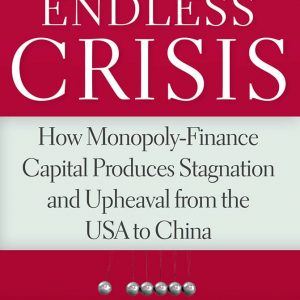John Bellamy Foster and Robert W. McChesney. The Endless Crisis: How Monopoly-Finance Capital Produces Stagnation and Upheaval from the U.S.A. to China (New York: Monthly Review Press 2012)
Reviewed by BILL DUNN, University of Sydney
THE AUTHORS, eminent representatives of the Monthly Review or monopoly capital school, argue that giant corporations, not free or efficient markets, dominate the economy. We live in a perverse world where powerful firms extract high profits but this becomes an economic problem as core national economies suffer from weak final demand, industrial overcapacity, and lack of investment. Foster and McChesney also challenge nationalist perspectives, insisting the economy should be conceived as a global whole. At least implicitly, they therefore reject simple policy fixes to what are profound structural problems. They end with Marx and the stark alternatives of “the revolutionary reconstruction of society at large, or … the common ruin of the contending classes.” (183)
The book begins by introducing the perspective of what the authors now term “monopoly-finance capitalism” and by outlining the transformation, particularly of the US economy, since the 1960s. The next three chapters flesh out the analysis and the narratives of monopoly power and the turn towards financialized accumulation. The general analysis follows that pioneered by Paul Sweezy, in particular, drawing on Marx but incorporating insights from other traditions, notably from Keynes. Capitalism is divided into three periods; an early mercantilist or state-led phase, roughly to the industrial revolution, a competitive or freemarket phase in the middle half of the 19th century, particularly in Britain, and since then monopoly capitalism. In this last period, large oligopolies dominate. They are not the passive “price-takers” depicted by orthodox economic models but more or less consciously collude. By eliminating price competition, they achieve a mark-up on their sales and higher profits. Surpluses tend to rise. But this leads to persistent difficulties reabsorbing these surpluses back into the economy. Final demand is limited and it pays firms not to raise production, so there is chronic overcapacity and a disincentive to invest. The economy tends to stagnate…

Comments are closed.